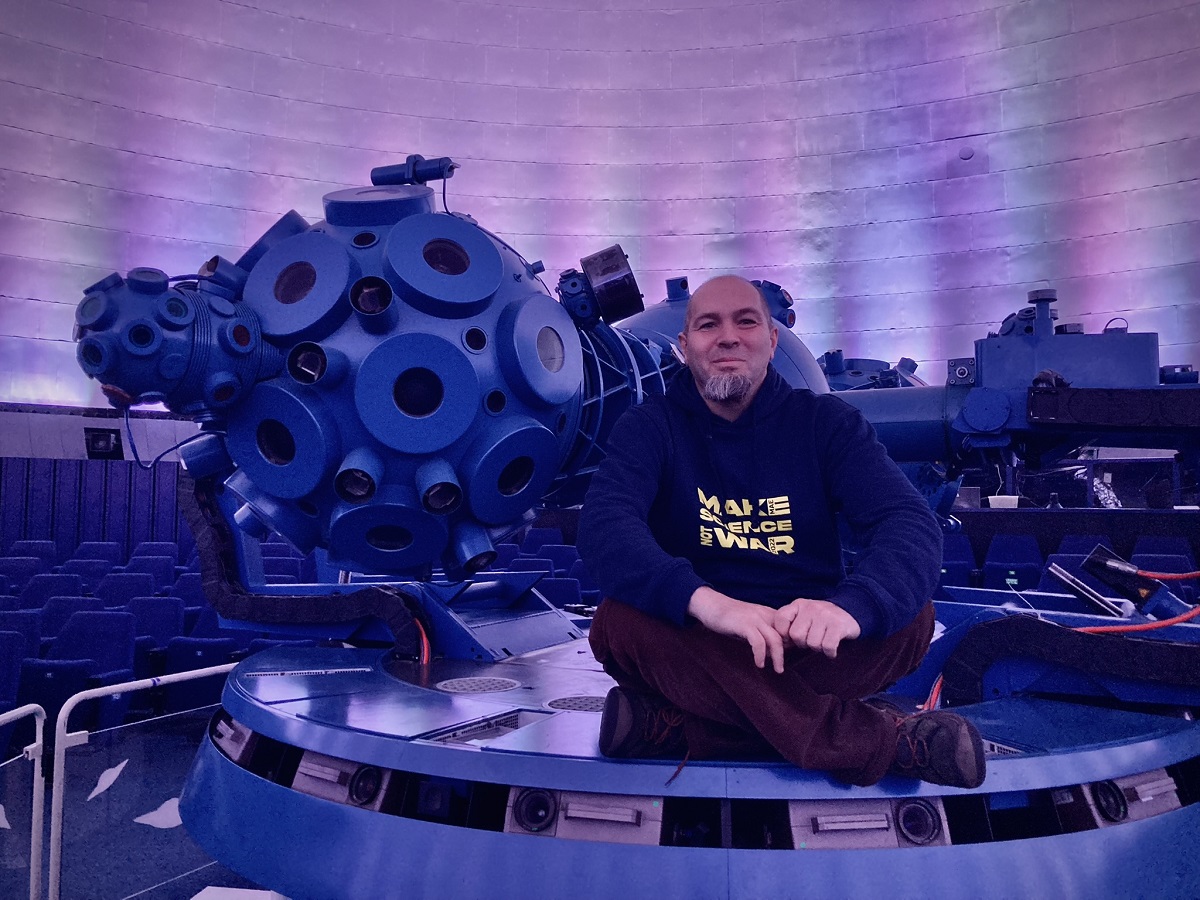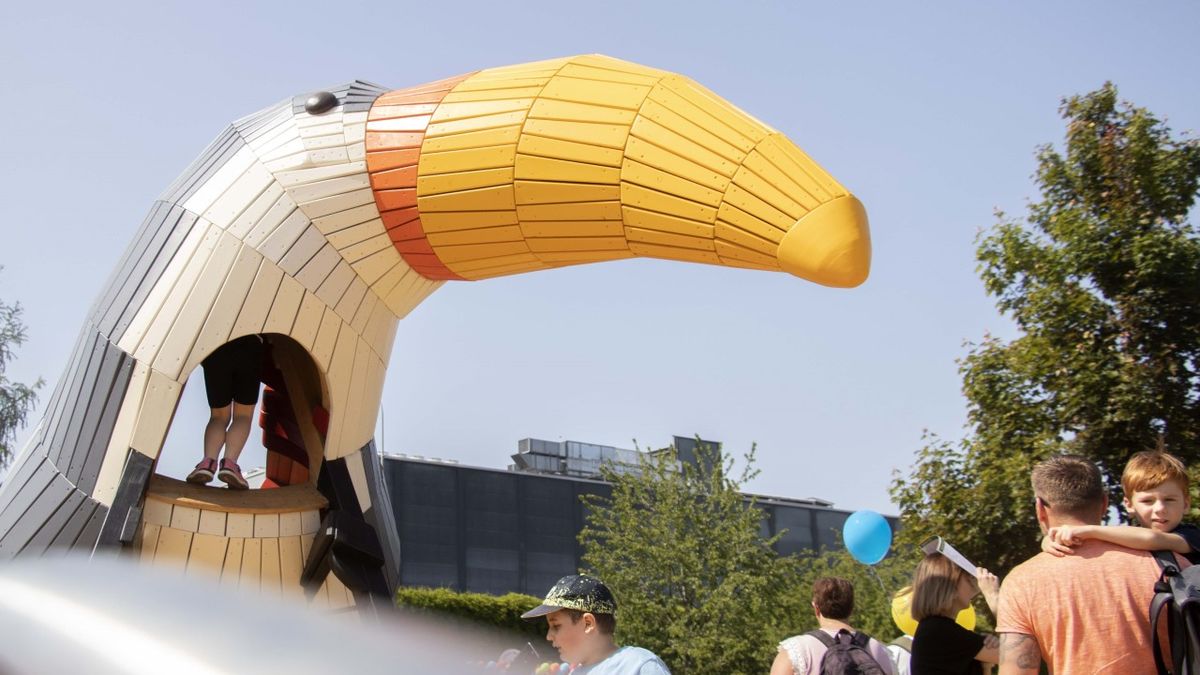Are you preparing any news?
The planetarium is currently preparing for the biggest renovation in its history, which will take place next year. Currently the image is projected onto a spherical ceiling by the projector we know from our own cinema or living room, the new dome will be equipped with more than 60 million LED lighting points. This is a completely revolutionary technology, which will be installed in our country as the second country in the world (after Japan), moreover, at record rates. The Prague Planetarium will thus be the most technologically advanced planetarium in the world.
Of course, we also had to adapt to these changes in terms of content, as the image quality of the LEDs was so uncompromising that it forgave creators a bit. Therefore, we will only be introducing new programs and possible formats in about a year and a half. But there’s definitely something to look forward to.
Where do you get inspiration for suitable topics to work on? It may not be easy to invent everything in such a way that it is pleasant for children, but at the same time they take away the necessary knowledge from it.
Personally, most of the ideas for new films, whether those that have already been realized or those that are still waiting in the drawer, come to me behind the wheel on an endless highway or while climbing a mountain. In general, of course, it is difficult to combine education with entertainment. Gone are the days of educational programs where monotonous voices recited facts about the lives of exotic animals. Planetarium hasn’t completely abandoned this concept yet, but the future is definitely elsewhere. The world today is ruled by stories.
The script should have a storyline in which the viewer absorbs information independently, organically. He must not be bored and overwhelmed. It’s also important to know who the film is intended for and resist the temptation to make it for everyone whenever possible. Most of the time it’s not for anyone.
We also have puzzles representing programs for schools. Should the program be more attractive to teachers or children? Who actually booked the school trip to the planetarium? Sometimes it is squaring the circle where pragmatism can win out in the end.
Is it more challenging setting up projects for kids or comparable to adults?
Everyone is different, so it’s best to have the right people on the right projects. The most challenging thing is when you do something that is not to your liking and doesn’t make you happy.
Adult audiences may be more tolerant in planetariums. He can enjoy a long time while admiring the planetarium’s synthetic starry sky. He enjoys space. Was it because they rarely saw such a sky in nature? Possible. But even here there is rapid development, because we are literally inundated with high-quality content, and choosing the best is easier than ever. Hence it can be assumed that the demand will only skyrocket. Content creation is demanding in general, so I probably won’t be sharing for anyone else.
Do you have a lot of interesting projects, for example video mapping, that have been popular in recent years? How could something like this happen? Certain agreements with the room or building where the screening will take place may be very important here.
For that matter, it’s not a church or an astronomical observatory, though I sometimes like that too. In 2012, at the Štefánik observatory, we built an installation called The End of the World, which brings viewers closer to the disasters that threaten humanity from outer space.
It was a lot of fun then, because it’s not a matter of mapping to a building, but to a scene in a room made of modeled polystyrene backgrounds. Mapping was common at the time so we went with the idea that we would just move it into the interior on a smaller scale and no doubt someone had done it hundreds of times somewhere. So the whole hall was rebuilt, projectors bought and backdrops built, it was prohibitively expensive and to my horror to find out that no one anywhere was doing this. If so, then in a hangar, but not in a 4×6 room and not in something that starts 50 cm from the projector and ends at the wall. In addition, it is necessary to create the impression that the wall is infinite. When the boss came to ask how it looked, I replied that it was good and turned gray with horror. So far, it doesn’t look like anything at all, and not even in the so-called five to twelve.
In the end, by some miracle, everything was revealed and the result wasn’t bad at all. The audience loved the installation. I then did two more internal mappings in the same style and I really enjoyed them. But my approach may differ from what is usually done with large facade projections. There is a lot about modeling and simulation, I think of it more like digital or brush graffiti.
What’s been the biggest challenge for you so far?
Big challenges are in front of me, behind me are small ones.
I would say that you are one of those people for whom work is also a hobby. But what else do you do in your free time?
Since a person enjoys his hobby at work, logically in his free time he has to work like a donkey jumping over children, sweeping leaves, on bike paths, in pubs, at concerts and on family vacations. (laughter)
However, I wanted to make a fulldome film about a four-thousander alpine freeriding, descending a wild river or climbing a 300m chimney. I’m preparing for now. But we actually got back to work.
Photo: courtesy of Martin Fuchs

“Unapologetic social media guru. General reader. Incurable pop culture specialist.”





